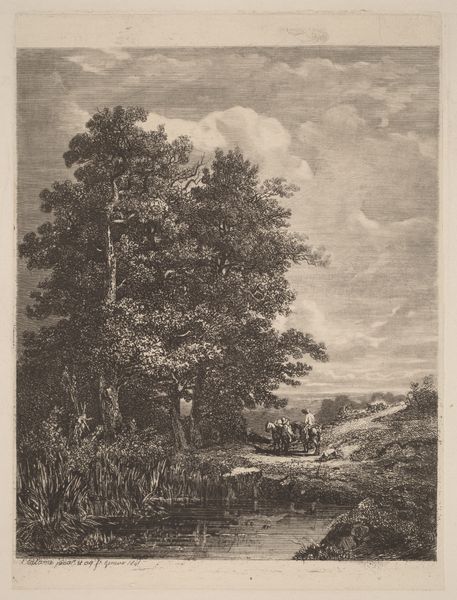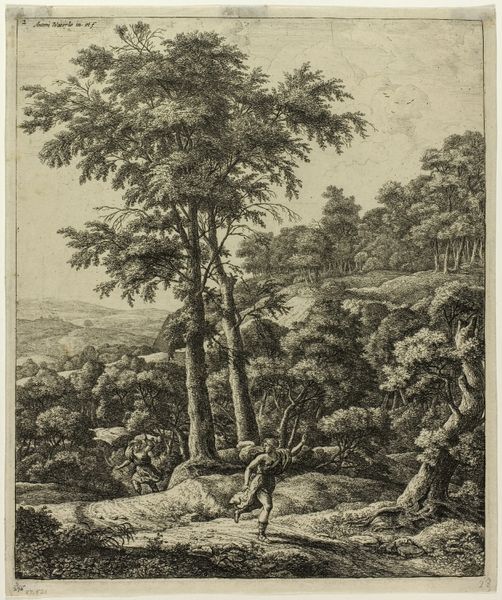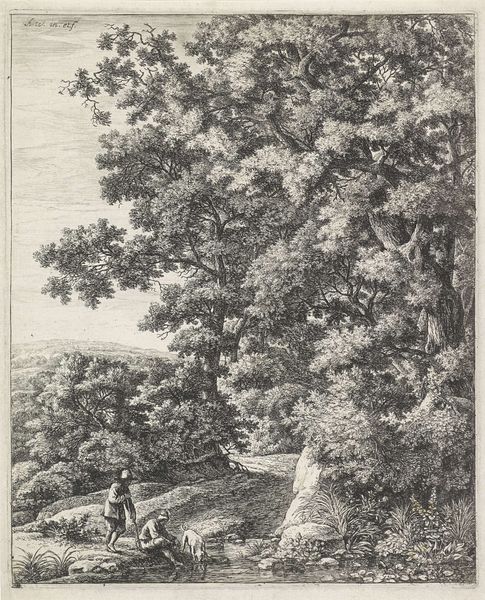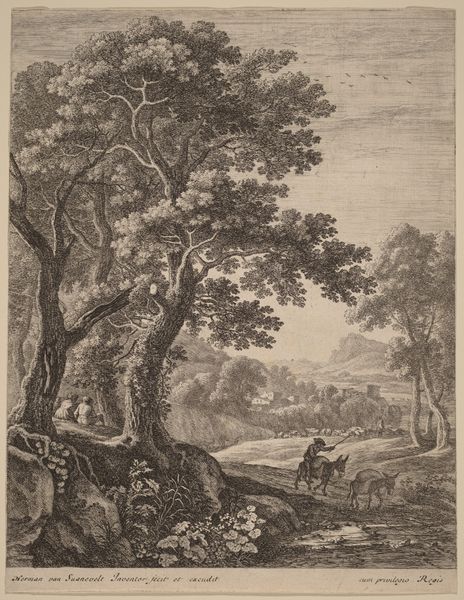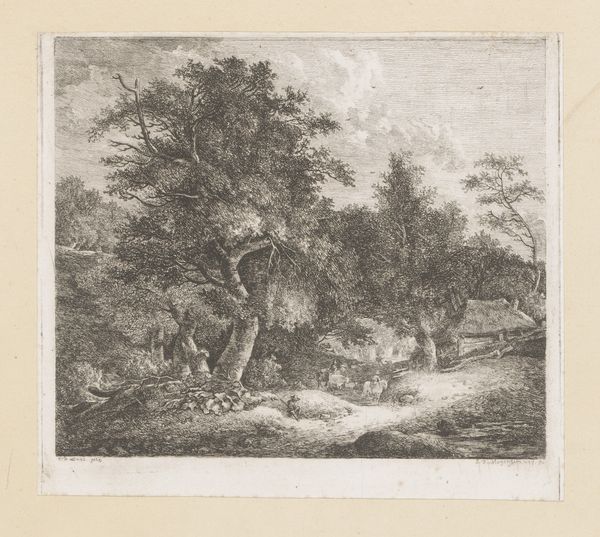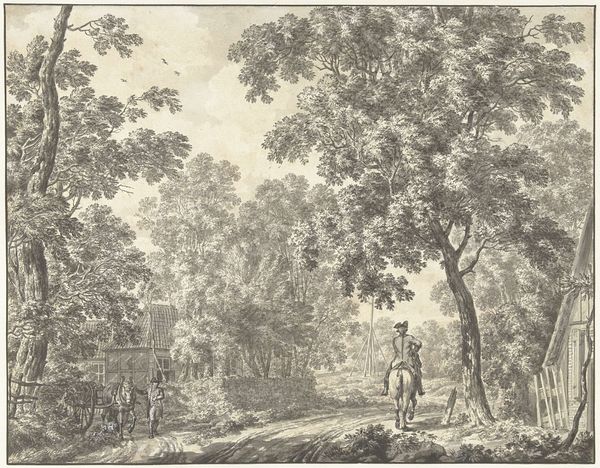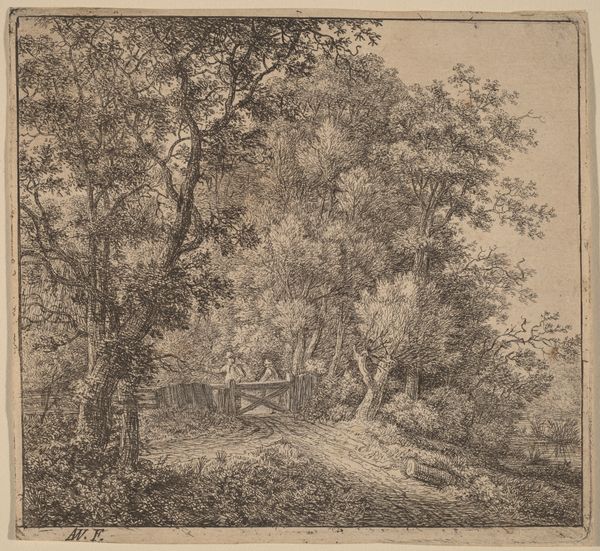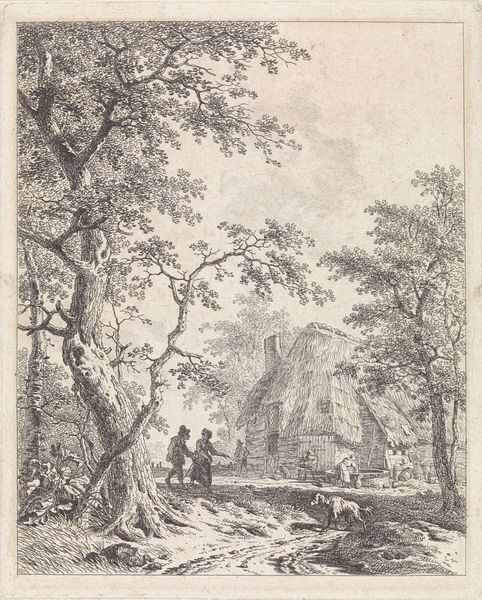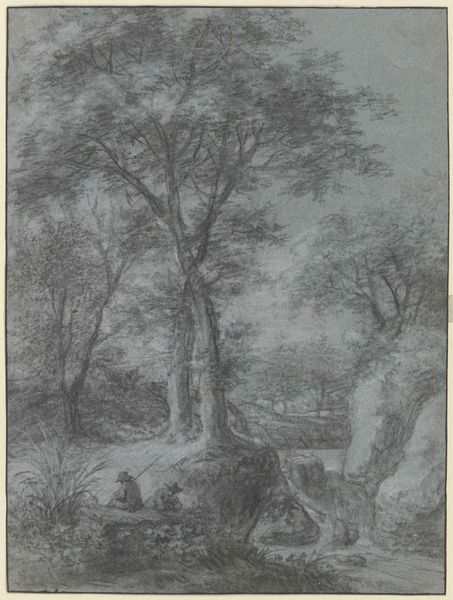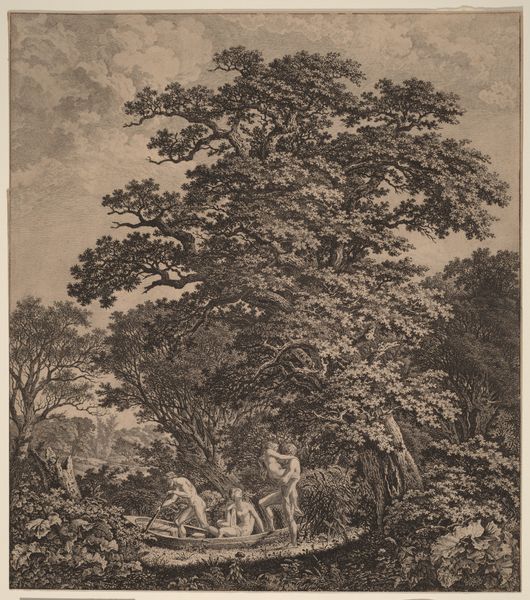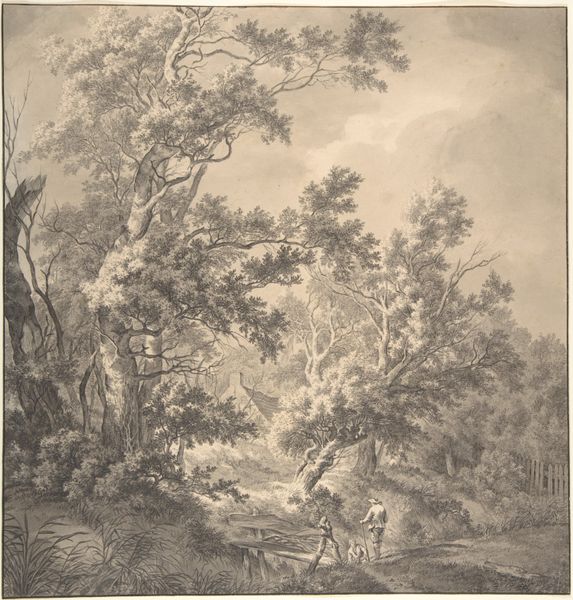
print, etching, engraving
#
narrative-art
#
baroque
# print
#
etching
#
old engraving style
#
landscape
#
engraving
Copyright: National Gallery of Art: CC0 1.0
Editor: So this is Anthonie Waterloo’s "Landscape with Alpheus and Arethusa," an etching. The scene is incredibly detailed, a dense forest surrounding this small body of water, where a figure is emerging from the water and reaching out towards someone fleeing. What do you make of this frantic interaction? Curator: I'm struck by how Waterloo uses landscape here. It isn't just a pretty backdrop. Think of landscape itself as an actor in this drama. The trees, rendered so meticulously, feel almost protective, witnessing this pursuit. This isn't just a flight from Alpheus, but also an entry into a sacred space of transformation. What memories, do you think, would this evoke for a viewer of the time? Editor: I guess the story of Alpheus and Arethusa would already be well-known… so there’s an element of recognition that adds depth? Curator: Exactly! Knowing the myth—Arethusa fleeing Alpheus’s advances and turning into a spring—imbues the image with layers of meaning. The landscape becomes symbolic. Water as transformation, the forest as refuge... And consider the artistic choices: the emphasis on the natural world during the Baroque period mirrors a societal interest in the relationship between humanity and nature. Look at the symbolism of a continuous transformation— what emotions are triggered in us when viewing it? Editor: The story certainly casts a shadow of both violence and escape upon an otherwise peaceful scene. The chase leads to her transformation. It’s powerful how he captures that instant. Curator: Precisely! The image is not static; it's a moment pregnant with potential. Even today, the symbols—water, trees, the fleeing figure—continue to resonate, perhaps triggering anxieties around the body, gender, or safety within a landscape. The image becomes a timeless representation of pursuit and change. Editor: It's incredible how a seemingly straightforward landscape can be so packed with cultural and emotional significance! Curator: Indeed. Waterloo used universal anxieties that continue to persist in this image centuries later. We remember our cultural history and traumas when viewing these visual symbols.
Comments
No comments
Be the first to comment and join the conversation on the ultimate creative platform.


